Castles in The Scottish Borders
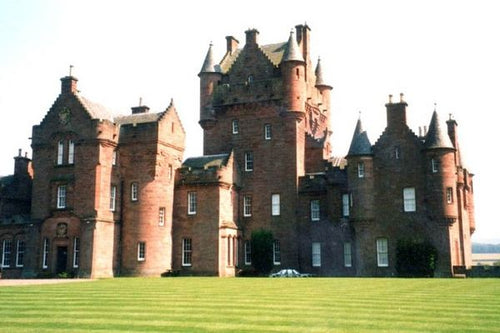
Ayton Castle
The Scottish Baronial style Ayton Castle is situated near the village of Ayton, just a few miles north-west of the English border. Ayton Castle was originally a peel tower and a stronghold of Clan Home who inherited it and the lands through marriage. For a period during 1497, the English held the castle, but left after the negotiation of the treaty of Ayton, signed on 30 September that year. The tower was replaced at some point by a classical mansion, which burnt down in 1834. The estate was purchased by William Mitchell-Innes who commissioned James Gillespie Graham in 1851 to build the red sandstone castle which now stands today.
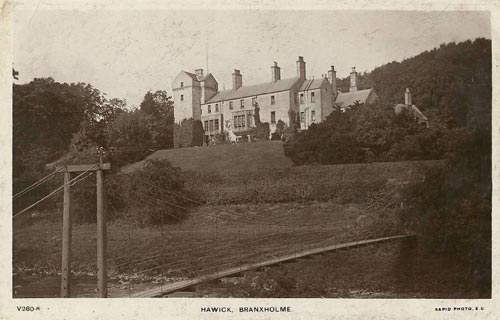
Branxholme Castle
Branxholme Castle sits three miles south-west of Hawick on land held by the Scott clan since 1420. The original castle was razed by the English Earl of Northumberland in 1532, but the second one managed to sustain the attack of the English during the 1547 War of Rough Wooing. However, in 1570 the Scotts themselves slighted the castle, and the job was then finished off by the Earl of Essex by blowing up the castle with gunpowder. Though, within a few years Sir Walter Scott of Buccleuch had already started the castle’s reconstruction, significantly increasing the castle’s size and strength. In 1837 extensive remodelling began by William Burn for Walter, 5th Duke of Buccleuch.
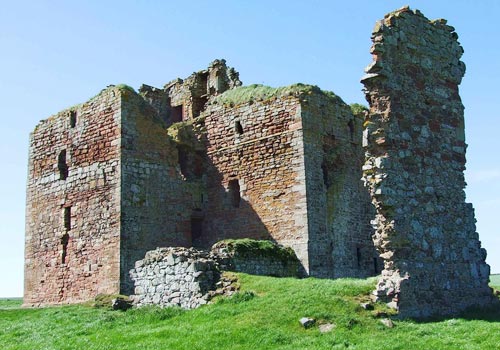
Cessford Castle
he ruins of Cessford Castle lie near the village of Cessford, and was a stronghold for Clan Kerr. The three storey castle dates from around 1450, and was built by Andrew Ker, ancestor of Robert Ker, 1st Earl of Roxburghe, and the future Dukes of Roxburghe. The lands had originally been held by the Sinclairs, but passed to the Kerrs. Sir Andrew Kerr of Cessford fought at the disastrous Battle of Flodden in 1513, but survived, and went on to become a Warden of the Marches. Throughout the middle of the 16th century, Cessford Castle was a frequent target of the English who deemed the stronghold the third strongest fortress in all of Scotland. The castle was eventually abandoned in 1650 when the last occupiers left, and stone and materials were taken later for the construction of Floors Castle.
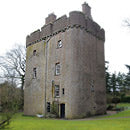
Cranshaws Tower
Cranshaws Castle situated in the County of Berwickshire is a well preserved, inhabited peel tower thought to date from the later 14th century. Rectangular in plan, it measures 40ft by 26ft and is 65ft high. The rounded corners are particularly interesting, being reminiscent of other late 14th century towers such as Drum or Neidpath.
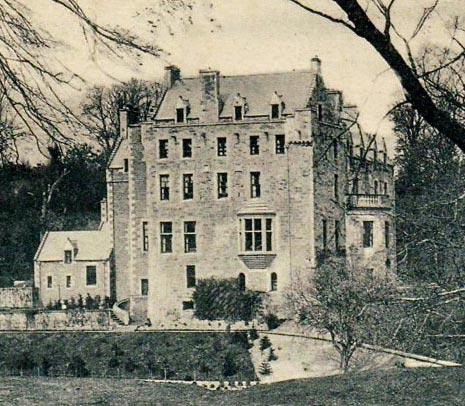
Cavers Castle
Cavers Castle, near Hawick, which was the seat of Clan Douglas, the oldest and most well known of the Border clans.
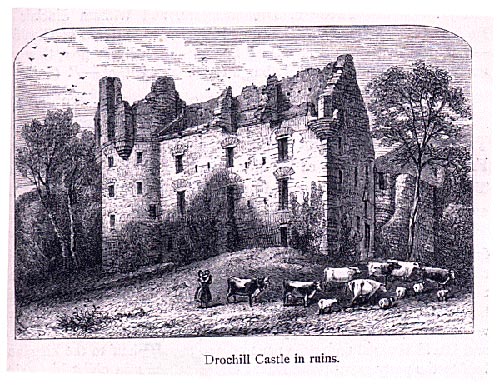
Drochil Castle
Drochil Castle, Peebles is a ruined castle in the Scottish Borders. It is located above the Lyne Water, 10 kilometres (6.2 mi) north-west of Peebles, and 8 kilometres (5.0 mi) south of West Linton. James Douglas, 4th Earl of Morton, Regent of Scotland, started building Drochil Castle in 1578, three years before his execution by King James VI. It was no more than half built on his death, and was never finished.
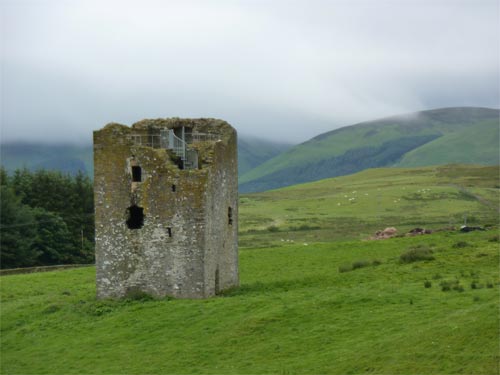
Dryhope Tower
Dryhope Tower, a 16th century peel tower. It was once hope to a notorious Border Reiver, it fell in to decay in the 17th century. It’s now open to the public and you can climb the staircase to the top.
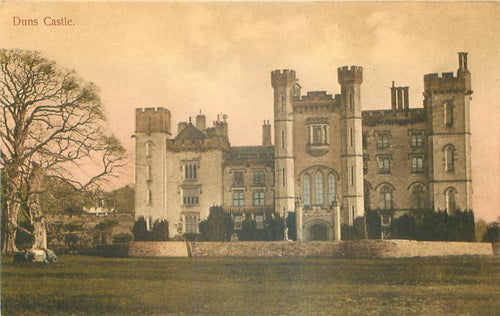
Duns Castle
Duns Castle is in Duns, Berwickshire. The oldest part of which, the massive Norman Keep or Pele Tower, dates from 1320. The earlier house was transformed into a Gothic castle, 1818–22, by architect James Gillespie Graham.
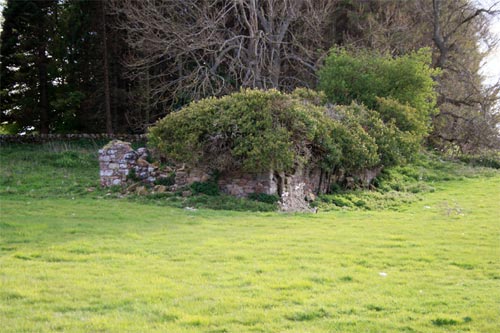
Edrington Castle
Edrington Castle is in the parish of Mordington and the county of Berwickshire. It is a ruined fortalice in Mordington parish, Berwickshire. Crowning a steep rock on the left bank of Whitadder Water, 5 miles W by N of Berwick, it seems to have been a solid substantial strength, well fitted to check incursions and depredations from the English side of the Tweed, on the W being totally inaccessible.
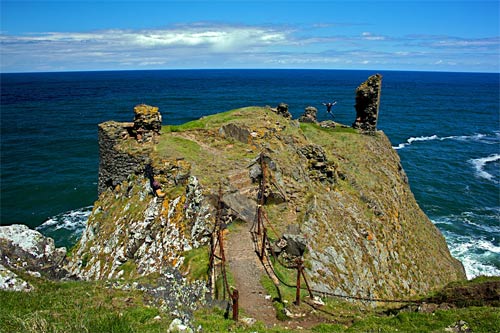
Fast Castle
Positioned on a promontory of land guarding the Firth of Forth, Fast Castle has had a colourful history including extended periods of occupation by English forces, embroilment in several attempted coups and later, once abandoned and ruined, was used for smuggling and ship wrecking.
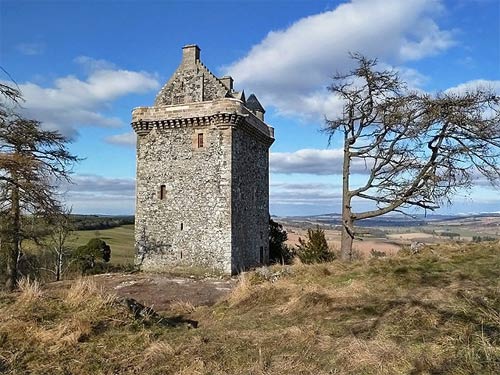
Fatlips Castle
Built in the 16th century by the Turnbulls of Barnhill, Fatlips Castle is a four-storey ruined pele tower located in Roxburghshire, at the top of Minto Crags. The castle is 4 miles west of Jedburgh and 48 miles south of Edinburgh in the Scottish Borders region.
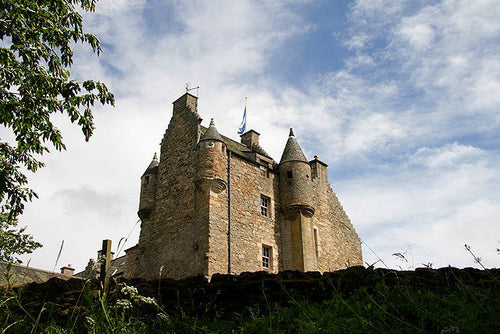
Ferniehirst Castle
Ferniehirst Castle, seat of the Clan Kerr, lies two miles south of Jedburgh in the picturesque Scottish Borders. The Kerr visit Ferniehirst Castle to experience the very roots of their proud family name and experience with me the telling of their story as we tour this beautiful Border fortress.
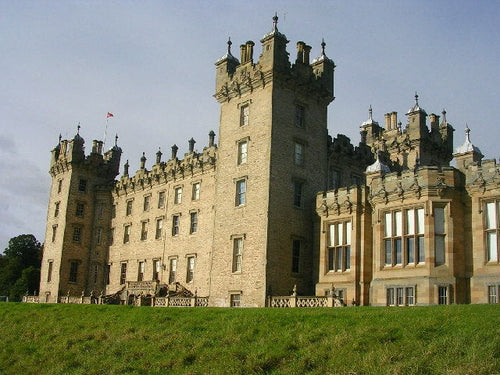
Floors Castle
Floors Castle, in Roxburghshire, south-east Scotland, is the seat of the Duke of Roxburghe. Despite its name it is a country house rather than a fortress. Situated approximately one hour’s drive from Edinburgh and Newcastle. Visit and explore the collection of fine art, porcelain, newly restored tapestries, grand rooms and superb views over the River Tweed and the Cheviot Hills. Built by leading architect William Adam in 1721 for the 1st Duke of Roxburghe, it has undergone periodic changes to create the dramatic building you see today.
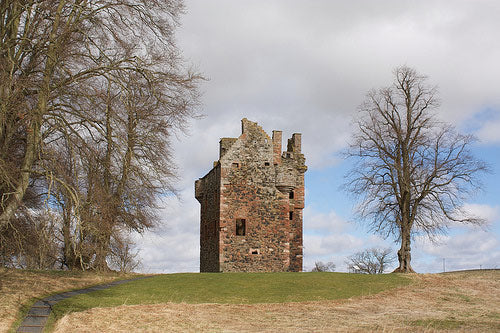
Greenknowe Tower
Probably built on the site of an earlier fortification of Clan Gordon, Greenknowe Tower itself was constructed in 1581 for James Seton.
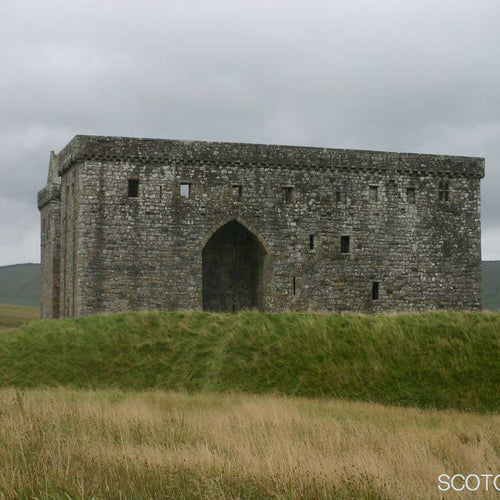
Hermitage Castle
Hermitage, in deepest Liddesdale, is a lonely spot. The feeling of foreboding is heightened by the presence of the awesome castle ruin. It has inspired colourful local legends – of the wicked Lord Soules and of a giant Englishman with impregnable armour who drowned in the nearby Hermitage Water. In truth, though, Hermitage has no need of myths. It has a history of torture, treason – and romantic trysts – sufficient for a host of castles.
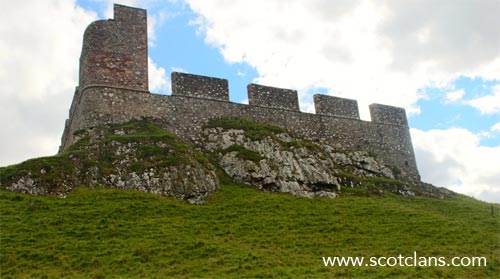
Hume Castle
Hume Castle is located in Greenlaw in the Scottish Borders. A site of great antiquity band history, from Hume Castle you can enjoy commanding incomparable views of The Merse. This medieval castle is said to be one of the most formidable defensive castles in the Scottish Borders.
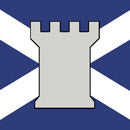
Jedburgh Castle
Jedburgh Castle was a castle at Jedburgh in Scotland. It was fought over during the Wars of Scottish Independence, and was demolished by the Scots commanded by Sir James Douglas of Balvenie in 1409. In 1823 a jail was built on the site.
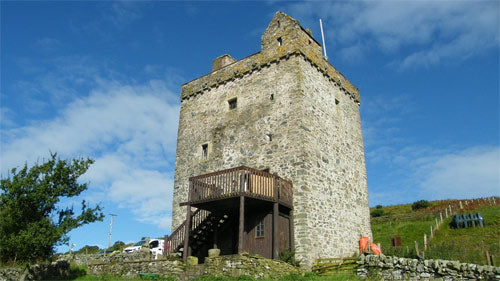
Kirkhope Tower
About a mile north-west of the Borders village of Ettrick Bridge, stands Kirkhope Tower, a restored four storey 16th century Peel tower (a fortified keep). The tower is believed to have been built sometime around 1535 by the Scotts. The tower was burnt by the Armstrongs on behalf of the Duke of Suffolk, Charles Brandon, during the early stages of the Rough Wooing of Mary, Queen of Scots, by the English king, Henry VIII. Kirkhope Tower was the childhood home of the notorious Border Reiver Walter ‘Auld Wat’ Scott of Harden, and it was him who rebuilt it. Anne Scott, 1st Duchess of Buccleuch, came into possession of Kirkhope in the early 1700s, however, by the mid-19th century, the tower was neglected and it fell into a state of disrepair. It wouldn’t be for over a hundred years before the strong hold was rescued from ruin and turned into a private residence.
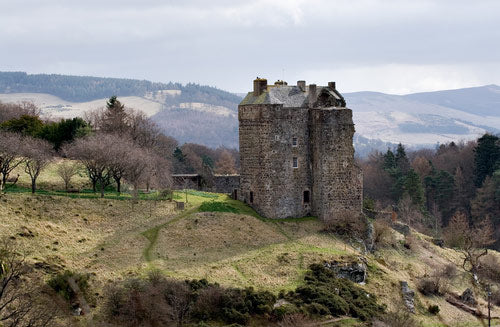
Neidpath Castle
Neidpath Castle stands in a commanding position on a rock cliff overlooking the River Tweed, just outside Peebles. The oldest part of the castle is a tower house erected in the late 14th century. Due to the shape of the crag on which the castle stands the tower is not rectangular in shape, but describes a parallelogram. The tower remains remarkably unaltetred until the late 16th or early 17th century, when the upper two storeys were remodelled to create a more comfortable residence. Further rebuilding took place from 1653-1686.
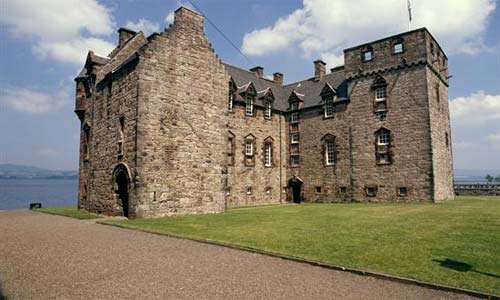
Newark Castle
This 15th century castle is mainly associated with Patrick Maxwell. His achievements in elegantly extending Newark are diminished by his notoriety for murdering two neighbours and beating his wife of 44 years and mother of his 16 children. The Castle offers excellent views over the Firth of Clyde.
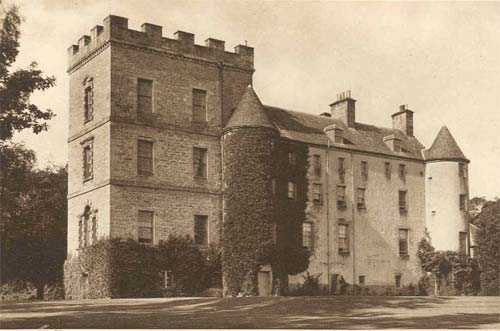
Nisbet House
Nisbet House is a substantial baronial style mansion in Nisbet, Berwickshire. It was built in about 1630 by Sir Alexander Nisbet. Architectural evidence suggests that the building incorporates, at its eastern end, the square pele tower that was the former Nisbet Castle. Sir Alexander Nisbet overextended his finances in supporting Charles I in the Civil War, and was forced to sell the property to John Ker in 1652.

Peebles Castle
Peebles Castle was a 12th-century castle built near Peebles, Scotland. Peebles was created a royal burgh by King David I of Scotland in the 12th century. The castle, once a royal castle, was built as a motte-and-bailey castle. Nothing remains above ground.
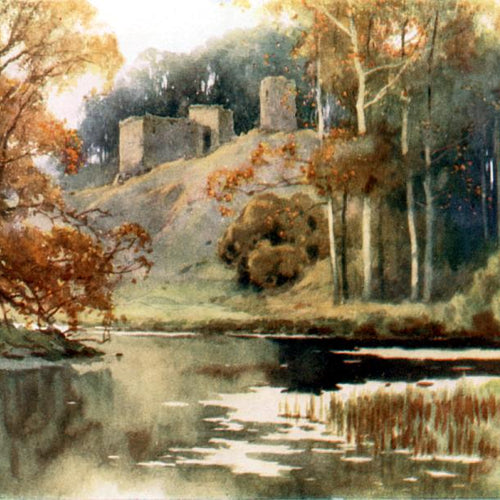
Roxburgh Castle
Roxburgh Castle, then known as Marchidun, is first recorded as the residence of the Earl of Northumberland in 1107. After David I renamed it, it became a residence for Scottish Kings over the next two hundred years. Within its walls, kings were born and kings were married, and outside its walls, kings died. It was a massive fortress with four towers and at least one church within its walls.
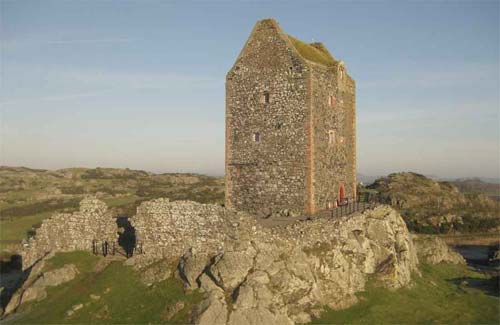
Smailholm Tower
Sited high on a rocky outcrop, Smailholm is a small rectangular tower set within a stone barmkin wall. This 65 ft towerhouse was built by a well-known Scottish Borders family in the first half of the 15th century, and today you can enjoy stunning views of the surrounding countryside from Smailholm Tower’s battlements. Inside the tower is a model of this Pringle residence and a charming collection of costume figures and tapestries relating to Sir Walter Scott’s Minstrelsy of the Scottish Borders. It was the sight of Smailholm that fired Walter Scott’s imagination when, as a young boy, he was brought up by his grandparents at the nearby farm of Sandyknowe.
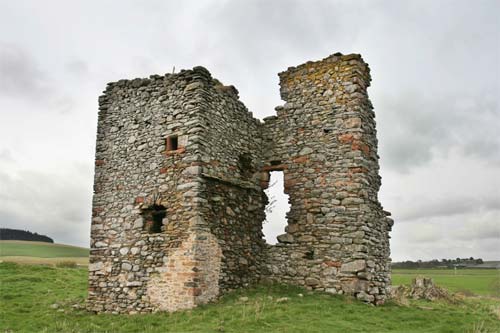
Thirlestane Castle
Thirlestane Castle is set in the Border hills at Lauder. Built originally as a defensive fort in the 13th century, it was re-built in the 16th century as the home of the Maitland family, one of the most able and famous in Scotland. The Maitlands came to Britain from France with William the Conqueror in 1066, and settled in Northumberland. In about 1250, Sir Richard Maitland married Avicia, the daughter and sole heiress of Thomas du Thirlestane.
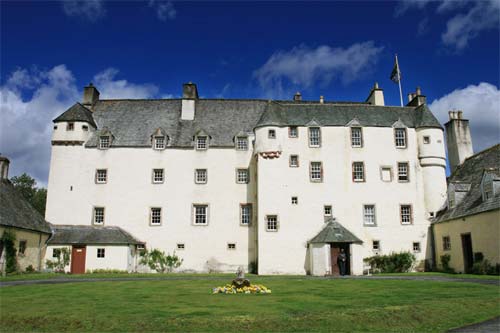
Traquair House
The name Traquair comes from tret or tre a word of Celtic origin meaning a dwelling place or hamlet, and from quair meaning a stream with a winding course. The Quair burn joins the River Tweed a few hundred yards from the house. Once a pleasure ground for Scottish kings in times of peace, then a refuge for Catholic priests in times of terror, the Stuarts of Traquair supported Mary Queen of Scots and the Jacobite cause without counting the cost. Imprisoned, fined and isolated for their beliefs, their home, untouched by time, reflects the tranquility of their family life. Spanning nearly a thousand years of Scottish history, Traquair today is a unique attraction for all ages. Trace the footsteps of the kings of Scotland as you climb the turnpike staircase and discover how priests escaped in times of danger. See the wonderful collections of embroideries, letters and relics of former times.
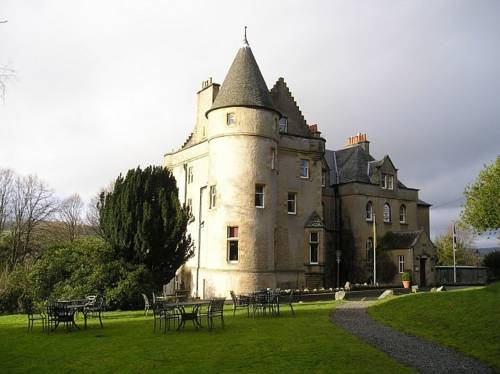
Castle Venlaw (inc. Only Smithfield Castle)
Venlaw Castle, also known as Smithfield Castle, lies north of Peebles on the Edinburgh Road in the Borders of Scotland. Since 1949 it has been operated as a hotel. The site was formally occupied by a 14th-century fortification founded by the Hay family, known as Smithfield Castle, which was destroyed in the 18th century. The present house was built for Alexander Stevenson, Sheriff Deputy of Peebleshire, on the site in 1782. It is an excellent example of the Scottish Baronial architecture, and is set in 4 acres (1.6 ha) of gardens. It remained in the Stevenson family until it was bought by the Grant family in 1790 and then by the Erskine family in 1798. It became the home of Admiral of the Fleet Sir James Elphinstone Erskine in 1862. It then passed to Richard Davidson, a retired tea planter, and then to a Miss Walton in 1946.
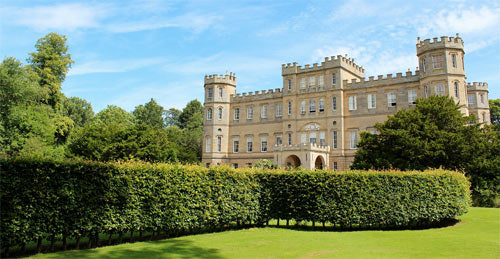
Wedderburn Castle
Wedderburn Castle, near Duns, Berwickshire, in the Scottish Borders, is an 18th-century country house. It is the historic family seat of the Home of Wedderburn family, cadets of the Home family (today Earls of Home). Wedderburn Castle was designed and constructed 1771–5 by the famous architect brothers Robert Adam and James Adam, with the work superintendent being James Nisbet, for Patrick Home of Billie, who had already completed Paxton House (using James Adam and Nisbet, with Robert Adam doing the interiors c. 1773). Battlemented three-storey elevations in the typical Adam Castle style, the apparent symmetry conceals a rectangular courtyard, originally filled by the 17th century (or earlier) tower house, also known as Wedderburn castle, of which only a heraldic panel remains. It was demolished in the early 19th century leaving the courtyard, accessed through an archway at the back.
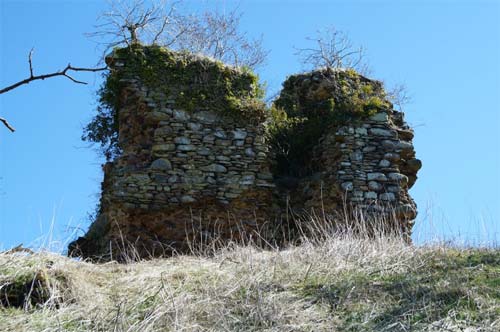
Whitslaid Tower
Whitslaid Tower was an ancient Berwickshire seat of the Lauder family for over 300 years. It is today a ruin high above the eastern bank of the Leader Water, 2 miles south of the burgh of Lauder, in the Scottish Borders. Built on the banks of the Leader Water, Whitslaid Tower was the family seat of the Lauder family who were a prominent faction in the Border region and who were extensively involved in regional events.
